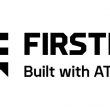Through the looking glass
As in every hospital emergency room, Oct. 31 was no treat for the staff of the University Medical Center in Tucson again this year. It was a typical Halloween, given the parade of hobgoblins and ghouls who — having been “cursed” with one or more of the ailments typically associated with fright night, from stomach distress to cuts, bruises and sprains — “haunt” large metropolitan emergency rooms every year.
Then the stabbing occurred.
“He was a clerk in a convenience store that has a bulletproof booth so nobody can get to the clerks. He got into an argument with a patron and had somebody buzz him out so he could go out and confront the guy. That was when he got stabbed,” said Dr. Terence Valenzuela, an emergency physician at the medical center and medical director of the Tucson Fire Department.
The stabbing provoked a red-alert response within the emergency ward, where the trauma team joined attending physicians and emergency doctors preparing for the clerk’s arrival. This time the emergency room crew had it a little easier: They had an up-close, all-angles look at the stab wound even as the ambulance raced through Tucson’s streets on its way to the ER.
The medical center recently started using ER-Link, a video-based emergency medical services (EMS) mobile telemedicine system that links in-vehicle cameras running off an in-vehicle router to a Wi-Fi wireless mesh network with nodes strategically placed on traffic lights around the city.
“You can get a huge amount of information by being able to see [the wounds],” Valenzuela said. “We get a sense of the patient before they arrive, what kind of personnel and resources they’ll need on our part when they arrive … and you can see how they’re doing.”
The deployment is the first to offer the ability to transmit video to the hospital while ambulances are en route. Emergency physicians can analyze patient conditions and review telemetry data, including heart rate and other vital signs, said Denise Barton, marketing director for Tropos Networks, which built the mesh network and supplies the in-vehicle equipment.
When Tucson officials first sought to build a municipal Wi-Fi network, the hospital’s needs, or even those of the police and fire departments, weren’t at the top of the list. The city wanted to improve traffic control, but when officials sought federal or state funds, they found the cupboard was bare. Funds for emergency operations, however, were more plentiful. The city eventually received $1.9 million in federal grants for the ER-Link application and another $1 million from the state of Arizona.
Thanks to this funding, Tucson ended up paying just $100,000 for a wireless system that should save $200,000 annually by eliminating the T-1 lines currently used to backhaul traffic-management data.
“We’re dropping all our phone lines, and we’re going to use radios,” said Francisco Leyva, project manager for the city of Tucson’s transportation department. “As an extra, we’re also going to be able to watch the video.”
Everybody, it seems, will be watching something in Tucson via the 230-square-mile broadband wireless network. With zoom-and-pan video cameras mounted on the city’s light poles, the traffic department can receive a “second-by-second status of who has green, who has yellow, if the pedestrian signal is activated and what detectors are seeing cars,” Leyva said.
The city’s police have installed equipment in seven vehicles and are testing the system as the department’s primary data communication platform, although they’ll hang onto their 800 MHz radios. Ambulances already are feeding back information while traveling city streets, and emergency room personnel can adjust angles, zoom and perform other maneuvers to obtain a picture that rivals computer streaming video.
“We’ve had three multiple-victim shooting incidents, and it really has helped things to go more smoothly to have a better idea of how severe the injuries are before the patient arrives,” Valenzuela said.
The Wi-Fi mesh network ties everything together, but unlike other municipal networks, it is not available to the general public. The traditional municipal Wi-Fi model calls for public safety to ride along free on a network that provides low-cost Internet service to residents and businesses and is supported by user fees and/or advertising.
“Our network is not as dense as other networks that do it for the public,” Leyva said. “We have maybe two radios per square mile when you’d need 15 to 20 radios to make it available to the public. We’re not there to do service to the public.”
Although the network doesn’t offer Internet service to the public, the network’s goals are very public-oriented.
“We want to share this in the buses to entice people to ride buses instead of driving cars and get free Internet access while doing that,” Leyva said. “The bus would have a [Tropos router], which is part of the closed network, and that would go to an access point and that’s where people would attach. They wouldn’t attach to the actual mesh.”
Leyva readily admits that Tucson entered the wireless space from a different direction than most of its municipal counterparts, which started networks to help consumers bridge the “digital divide” with inexpensive high-speed broadband connectivity.
“We think we got it right the first time doing it backwards from everybody else,” he said. “When we started looking to this system in ’99, the money was with medical applications. … [We] created this ER-Link program to provide a service for which funding was available and, as an extra, be able to have many other communications after that.”
A successful Wi-Fi network is big news in today’s environment. Municipalities have been taking it on the chin as build-out schedules have gone awry, and one of muni Wi-Fi’s biggest proponents, EarthLink, has taken a side step and is currently reconsidering its approach to the sector, which in turn is making many jumpy. In addition, the muni model just hasn’t seemed to jell, despite the best intentions of city officials to use citywide wireless to help residents and encourage tourism.
Now, as Tucson is demonstrating, Wi-Fi can serve the public interest without actually touching the public.
“Public safety is big,” Tropos’ Barton said. “We have seen a tremendous amount of interest in Wi-Fi and have multiple cities using it for public safety.”
She believes that public-safety agencies will find the network’s architecture attractive. “When you’re tooling around in a car, you’re actually in the coverage area because you have the router right there,” Barton said. “By having the router in the car, there [is accessibility to] high-bandwidth applications. There are no special antennas; it typically goes in the trunk in a self-contained box.”
Besides public safety, there’s an element of police safety involved as well.
“Today many of the police officers are riding by themselves. … They have no backup, so a video camera can monitor them while they’re doing that, and [the footage can] be transmitted back to a central location where someone can keep an eye on the officer. In addition, these days video can be used in court as evidence,” she said.
Tucson is still learning what the system can do. The transportation department is installing cameras with even more capabilities on selected traffic lights and considering using the video to catch traffic violators or other law-breakers, while other city departments are planning to give employees voice-over-IP phones that connect through the network.
Meanwhile, University Medical Center is considering using portable on-scene cameras to bring even more efficiencies to emergency room staffing.
“Inevitably, we err on the side of being conservative” and over-responding to an emergency, Valenzuela said. “That tends to wear out the trauma team. Our main objective in taking on ER-Link is to see if we can reduce the amount of over-commitment of resources.”

















